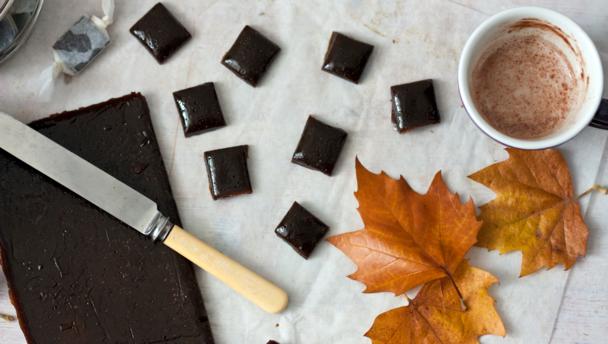

By Emily Angle
Toffee is a confection made from sugar and butter with a pleasingly creamy, melting texture. Toffee can be hard or soft, depending how it’s prepared. Additional flavourings or ingredients, such as nuts, chocolate, cream and even whisky are all common. Toffee is sold either in small bars, as wrapped sweets, or loose in boxes, broken up into bite-sized pieces. Bonfire toffee, made with black treacle, has a more intense flavour than regular toffee and is popular during Guy Fawkes celebrations. British toffee is made differently to American taffy – with the latter, the sugar mixture is pulled.
 Bonfire toffee
Bonfire toffee
 English almond butter toffee
English almond butter toffee
 Pulled butter toffee
Pulled butter toffee
See all recipes for toffee (4)
 Toffee apple cake
Toffee apple cake
 Toffee apple muffins
Toffee apple muffins
Store toffee in an airtight container in the fridge for 1-2 weeks. Separate layers of toffee with sheets of waxed paper to prevent them from sticking to each other.
The basic toffee recipe involves heating the mixture to either the ‘soft crack’ stage (a temperature of 132-143C/270-290F) or ‘hard crack’ stage (a temperature of 149-154C/300-310F), depending on whether you want to make soft or hard toffee.
When melting the sugar and butter, use a deep-sided pan because the mixture can more than double in volume during preparation. Spread the toffee mixture onto a silicone baking sheet – these can be easily peeled from the cooled, hardened toffee. If you want toffees of uniform shape, score the slab of toffee while it’s cooling to make it easier to break apart when hardened. Otherwise, break the toffee with a toffee hammer once it’s cooled.
Type the ingredients you want to use, then click Go. For better results you can use quotation marks around phrases (e.g. "chicken breast"). Alternatively you can search by chef, programme, cuisine, diet, or dish (e.g. Lasagne).